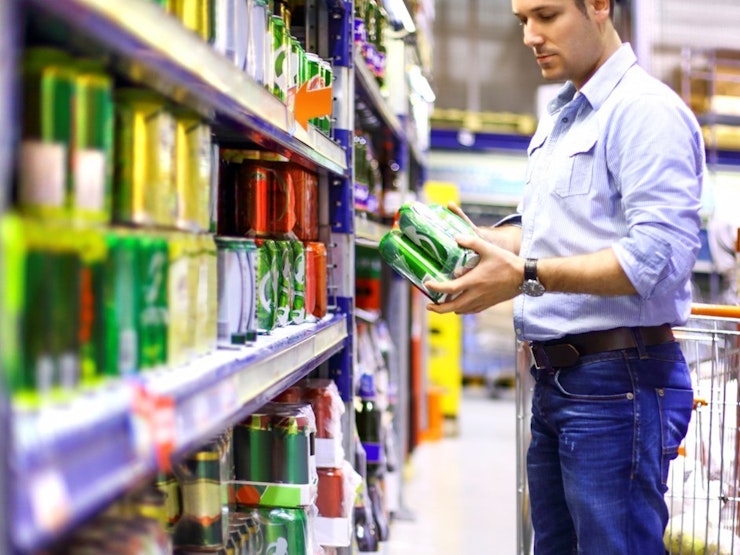Alcohol is a pervasive theme in young people’s social media interactions, and one of the products most likely to elicit ‘user engagement’ online (Ridout et al., 2011; Socialbakers, 2013; Winpenny et al., 2014). The recent expansion of social media use amongst under-25s has created unprecedented opportunities for marketing alcohol products, especially with the emergence of more interactive platforms alongside digital and mobile technologies (Carah et al., 2014; Weaver et al., 2013).
Most forms of social media alcohol marketing (SMAM) involve marketing messages created by alcohol brands alongside content created by consumers (‘user-generated content’ or UGC). Regulation of SMAM tends to focus on the former, but UGC can draw consumers into close interactive relationships with brands, products and drinking venues (Nicholls, 2012; McCreanor et al., 2013; Atkinson et al., 2014; Purves et al., 2014).
This project is the first to conduct a systematic analysis of online marketing aimed at young people in the UK by selected venues as well as alcohol brands, investigating young people’s engagement and the implications for the current UK advertising Codes of Practice.
The project:
- Reviewed current social media marketing practices aimed at young people by bars and clubs as well as alcohol brands, examining a selected sample of cases in depth.
- Investigated how young people below and above the legal age for purchasing alcohol engage with social media marketing by brands and venues, identifying the potential impacts on their drinking cultures, and exploring how these processes might be shaped by gender and social class.
- Assessed the effectiveness of the current ASA Codes of Practice for regulating social media marketing aimed at young people.
Stage 1
A mixed-methods content analysis of 419 social media marketing posts by five alcohol brands and three venues on Twitter, Facebook and Instagram posted during two consecutive weeks in May and June 2016.
Stage 2
Eleven mixed and single sex focus groups (53 young people aged just below and above the age of 18) were recruited from schools and universities in South-West England. Friendship group discussions investigated the participants’ engagement with online alcohol marketing and its relationship to their drinking cultures and social media practices.
Group discussions were followed by 22 individual interviews involving 17 young people from the focus groups and a further five young people recruited independently. Interviews were conducted while online enabling the researchers to display selected social media marketing posts and discuss participants’ social media practices and profiles with their permission.
Social media marketing activity by alcohol brands and venues
There were several key differences in the social media marketing activities of the alcohol brands and venues in our sample. Overall, we found that:
- All venues in our sample posted on social media more frequently than the alcohol brands during our two-week research period.
- The level of social media marketing activity by alcohol brands varied depending on whether they were running specific promotions. This followed a similar pattern to traditional offline marketing campaigns rather than the constant activity that can characterise social media use.
- The social media pages of alcohol brands and venues attracted large numbers of followers ‘liking’ these pages, especially on Facebook. User-engagement ratios for posts by venues were lower than for the alcohol brands, but this does not reflect other important forms of user engagement.
- Venues and brands were more active on Twitter than Facebook or Instagram.
Content analysis of social media marketing practices and themes
There were important differences in the social media marketing practices and themes employed in posts by alcohol brands and venues across the three social media platforms.
For alcohol brands, we found that:
- The most common social media marketing practices linked products to sponsored events, or ‘real world tie-ins’; followed by posts providing information about availability of products; posts that associated drinking with specific times and/or events; retweeting or sharing images; associating their product with other products and pages; and finally posts that resembled advertisements.
- The main themes linked drinking to specific environments, such as the home, festivals or outdoors; used vernacular/informal language and emojis; engaged with popular music (including festivals and gigs); included images of consumers as well as sportspeople and celebrities.
For drinking venues we found that:
- The most common posts presented information about events; provided information about availability of products; asked fans to book/reserve seats or guest list places; associated drinking with specific times and/or events; asked followers to like, comment, share a post; asked a rhetorical question; and included venue-generated images of consumers.
- The main themes used vernacular/informal language and emojis, popular music (including festivals and gigs); emphasised friendship or group bonding; aspirational lifestyle images; and images of consumers.
Female and male consumers were represented differently in posts by alcohol brands and venues. Posts by alcohol brands aimed at female consumers (such as Malibu and Lambrini) often depicted young women drinking in all-female groups in the domestic sphere. Posts by venues often included images of female and male guests taken by the venue’s in-house photographers. Young women tended to be depicted in glamorous smart clothes, whereas young men appeared as more drunk and in less formal attire.
Only 1.4% of the posts by alcohol brands and none of the venue posts included messages about responsible drinking. These were small, not very noticeable, and were generally undermined by exhortations to consume alcohol in other posts.
The most common form of social media marketing by alcohol brands forged associations between particular alcohol products and ‘branded drinking spaces’, including sponsored areas at music festivals, and gigs by featured artists.
Reported alcohol consumption levels among study participants
The majority of our respondents reported consuming alcohol, with male respondents more likely to say they drank alcohol compared to females in both age groups. A minority of the over 18 group reported drinking over the current ‘low risk’ guidelines of 14 units in the previous week. A small number of female and male respondents reported drinking over 20 units in the previous week. Three of these young men reported drinking over 40 units in the previous week. Respondents recounted stories of heavy drinking when asked to describe “good” and “bad” nights out in the majority of focus group discussions with both age groups.
Young People’s Views of Social Media Marketing by Alcohol Brands
In our analysis of young people’s perspectives on social media marketing by alcohol brands we found that:
- Only four respondents reported following alcohol brands online, mainly because they felt it would send a negative message to relatives and work colleagues, and because of the volume of advertising it would generate on their own social media pages.
- Almost all older respondents reported following alcohol brands when they were younger, when doing so signified maturity. The under-18 group reported following alcohol brands online when they were as young as 12.
- Older respondents felt that alcohol brand marketing presented inaccurate and potentially misleading representations of young people’s drinking.
- Respondents defined alcohol marketing in a relatively conventional and narrow way as “anything with a picture of alcohol in it” or that mentioned a particular alcohol brand.
- Respondents were keen to represent themselves as ‘media savvy’ consumers immune to the potential influences of marketing, and many were highly critical of alcohol advertising. There was widespread distrust of the motives of alcohol marketers in promoting ‘responsible drinking’ messages. A minority of young people from the under 18 groups advocated the inclusion of health education messages on alcohol products similar to those on cigarette packets.
Marketing by venues
Respondents reported more engagement with marketing by venues than brands. We found that:
- A higher proportion of 18+ participants engaged with social media pages of venues compared to brands.
- Most older respondents reported ‘liking’ or ‘following’ social media marketing related to specific events rather than the pages of venues per se.
- Most under-18s reported that they did not ‘like’ or ‘follow’ venues because they were too young to get into clubs and bars, although this was something they planned to do in the future.
- Older respondents would ‘go to’ events pages to obtain information; sign up to guest lists; find out about promotions; gauge interest in the popularity of an event; organise an event amongst friends; and, finally, as a reminder about forthcoming events or events they had previously attended.
- Signing-up to event guest-lists was primarily driven by the incentive to get cheap alcohol.
- Older respondents also reported: ‘commenting’ on venues’ social media pages in order to alert their (online) friends to particular deals; signing up to the pages of third-party promoters; and checking-in to venues during a night out or uploading their own photos to the social media pages of the venue or event (usually via Facebook).
- When venues uploaded photos of ‘guests’ they were primarily young people in the 18 to 25 age range. Some were uploaded by guests themselves, but most were taken by venue photographers with the guests’ permission. Several respondents preferred to avoid being ‘tagged’ in such photos.
- Respondents used platforms such as Facebook and Instagram to post more ‘respectable’ content, and used Snapchat as the main source of “drunken” posts that could be shared with a more restricted group of friends
Our research indicates that young people are relatively critical of the motives of alcohol companies in promoting their products as well as in their display of ‘responsible drinking’ messages. Our respondents identified stark differences between the images of glamorous and carefree alcohol consumption in some posts and the more likely outcome of drinking heavily. At the same time, social media activity played an important role in the experience of (often heavy) social drinking occasions. Participants used social media to actively seek out ‘cheap deals’ and plan destinations.
Older participants were more likely to follow local venues on social media than major alcohol brands. They did so not only to plan drinking occasions but, in some cases, to document them. Images associating alcohol with social success, sexual attractiveness and intoxication were more common in marketing by venues than brands. A majority of our respondents reported ‘following’ social media marketing by alcohol brands well under the age of 18, and a minority of under-18s also ‘followed’ venues despite being too young to enter such premises legally.
This research highlights the complex role social media marketing plays in drinking cultures. It also highlights the difficulties in regulating marketing activities, especially by local venues. Whereas major brands are liable to have, or be signatories to, codes of conduct for marketing this is not the case for many venues, especially independents. Venue marketing is also very short-term: often advertising events or offers taking place in the next few days. The speed and volume of social media activity at the very local level poses serious challenges for regulation, especially in a ‘reactive’ system whereby complaints are adjudicated over a number of weeks.
The findings of this research confirm that alcohol marketing on social media presents new, and significant, challenges to the current regulatory regime. In particular, it highlights the central role that venue-level marketing plays in the social media activity of younger consumers. The current regulatory structure, relying partly on buy-in from major brands and operating through reactive adjudication, does not appear capable of addressing these challenges in its current form. Therefore, our key recommendation is for a comprehensive review of existing digital marketing regulations in order to ascertain fitness for purpose. This review should take careful account of marketing by venues as well as brands.


